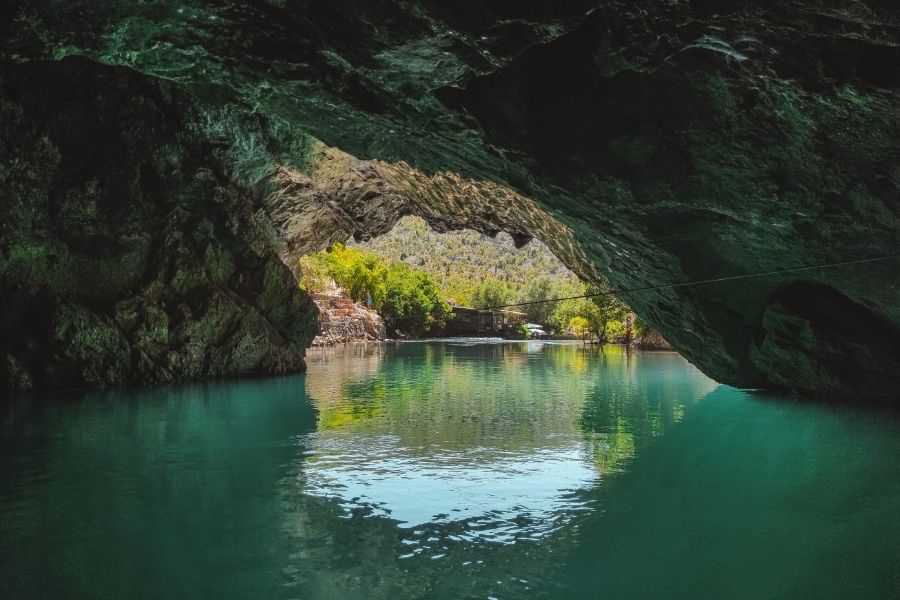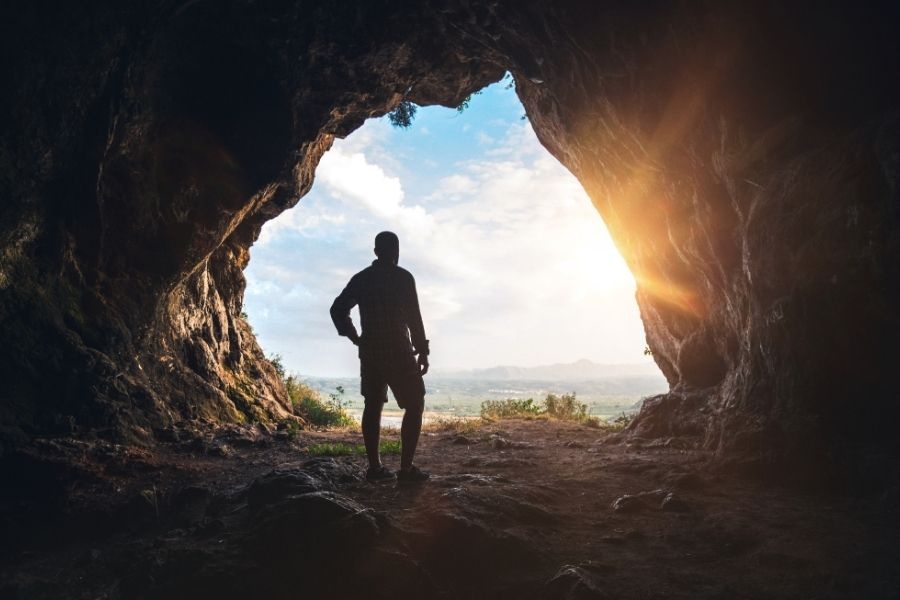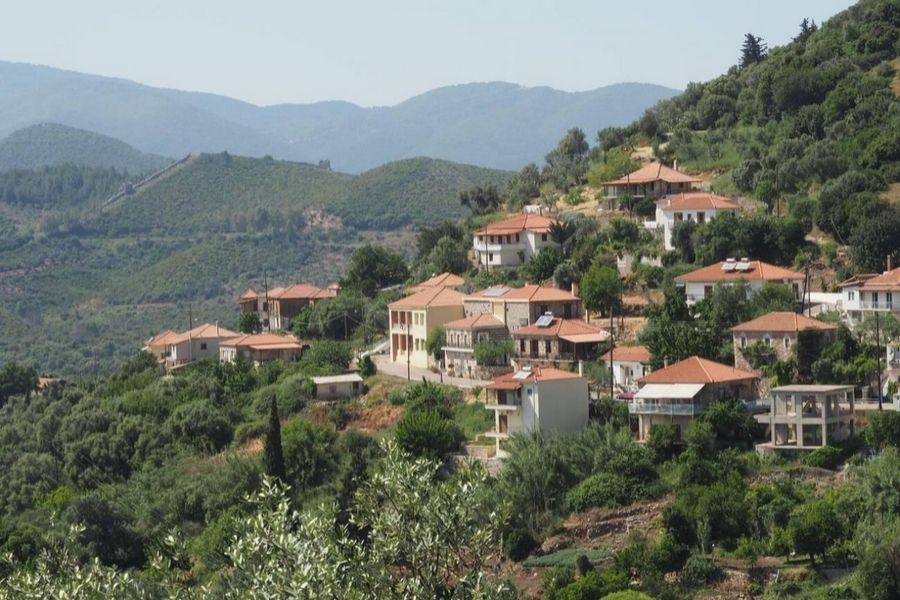Tucked away beneath the mountains of the Peloponnese, there’s a natural wonder that honestly left me speechless. The Cave of the Lakes near Kalavryta, Greece, feels like an underground fairytale where nature just goes wild with imagination.
As I walked through this mysterious cave, passing a series of 13 lakes stacked at different levels, I saw for myself how water and time can pull off something truly magical.
You’ll find this underground marvel 827 meters above sea level, just 17 km from Kalavryta. It’s not your average cave—it’s got its own vibe, a place where lakes, stalactites, and cave formations collide to create a landscape that feels almost out of this world.

I wandered through the darkness and realized there’s so much more here than just colorful lakes. Nature has been at work for thousands of years, sculpting an underground masterpiece where reality blurs into fantasy.
Some travelers say the real thing doesn’t always match the glossy photos, but honestly, the cave’s mysterious atmosphere and those crazy stepped lakes make it a must for anyone chasing natural wonders off the tourist trail.
Unveiling The Cave Of The Lakes: First Impressions And Enchanting Legends
The Cave of Lakes near Kalavryta instantly grabs you with its dramatic entrance and a mysterious vibe. Local legends swirl around this place, handed down through generations.
The Awe-Inspiring Entrance and Atmosphere
My excitement spiked as I got closer to the Cave of Lakes, perched just 17 km from Kalavryta and 827 meters up. The entrance is almost hidden in the Peloponnese mountains, making for a pretty epic first look.
Once inside, I couldn’t help but stare at the terraced lakes spilling across three levels. The water glows in shades of green and turquoise that look unreal in the cave’s dim light.
As I moved through the chambers, the temperature dropped fast. The air felt cool and damp, carrying that earthy, mineral smell you only find underground.
Water dripped and trickled everywhere, creating a soundtrack that was oddly calming.
A guided tour sets you back 9 euros. Yeah, the guides sometimes rush things, but honestly, the jaw-dropping formations make up for it.
Local Greek Myths and Mystical Lore
People used to call the Cave of Lakes “Troupissio,” and it’s a big deal in local Greek mythology. Folks from nearby Kastria have always believed the cave acts as a gateway to the divine.
One myth says the lakes are actually nymphs’ tears, frozen in stone as they tried to escape Pan, the wild god. Another tale claims the cave was a safe haven for lost souls running from the chaos of the mortal world.
I got chills hearing stories linking the cave to the Greek underworld. Some locals swear you can hear ancient voices echoing through the chambers on certain nights.

These myths give the cave a richer meaning, turning every stalactite and water pool into a piece of Greek storytelling.
Historical Echoes: From Ancient Times To The Present
Archaeologists have found pottery and artifacts inside, so people clearly knew about the Cave of Lakes way back in ancient times. Early locals probably used it for rituals.
When things got rough in medieval times, people hid out here. Its remote spot and tricky entrance made it the perfect hideaway.
Explorers really started poking around the cave in the early 1900s. Only in the last few decades did they set it up for visitors.
Now, wooden walkways let us wander safely without messing up the ecosystem.
The cave keeps changing, too. Water and limestone keep working together, adding new formations so slowly you wouldn’t notice unless you stayed for years.
Geological Wonders And The Hidden Lakes Within
The Cave of the Lakes in the Peloponnese is pure proof that nature has all the patience in the world. Down here, water and time have carved out an underground world full of wild formations and thirteen stepped lakes.
Striking Underground Formations And Colors
When I first stepped inside, I could barely believe what I saw. Stalactites dangled like stone icicles from above, while stalagmites pushed up from the ground, some finally joining to make thick columns.
The colors inside are unreal. Limestone formations go from bright white to deep amber, rusty red, and even black where minerals have left their mark. These colors tell the story of water carrying different minerals through the rock.

Light bounces around in here, reflecting off the lakes and creating shifting patterns of shadow and color. It’s like the cave is alive and breathing.
The Formation Of Lakes: Water, Rock, And Time
The cave’s thirteen stepped lakes really steal the show. Most caves might have a pool or a trickle, but here, the lakes tumble down like a natural staircase.
Each lake formed over thousands of years. Water dissolved the limestone, then left behind minerals that slowly built up natural dams—these “rimstone” barriers hold the water in place.
I found out the water levels change with the seasons. In spring, snowmelt fills the lakes to the brim, but during dry months, some shrink down. The cave is always changing, shaped by the endless flow of water.
Unique Ecosystems Beneath The Surface
Life finds a way down here too. I spotted tiny, eyeless crustaceans swimming in the pools—they’ve adapted to total darkness.
The microorganisms are wild. Some bacteria actually help build new stone features by making minerals solidify out of the water.
The cave stays at about 16°C all year, with high humidity, which suits these creatures just fine. Scientists love studying this place to see how life survives in such strange conditions.
This hidden world reminds me that nature never gives up on creating beauty, even in the toughest spots.
Timeless Symbolism: Ancient Philosophy And Spiritual Meaning
Caves always had deep meaning for the ancient Greeks. They saw caves as the line between our world and something deeper, more mysterious.
The Cave of the Lakes really brings those old ideas to life.
Echoes Of Plato, Pindar, And Philosophers
Standing in the Cave of the Lakes, I couldn’t help but think of Plato’s Allegory of the Cave. In the dim light, watching shadows flicker on the walls, I got why ancient Greeks thought caves were places of wisdom and awakening.
Pindar, the old poet, talked about caves as sacred places where transformation happens. He wrote, “The mind awakens in darkness,” which hit home as I watched light filter through the stalactites.

Greek thinkers believed these underground spaces let you tap into deeper intuition, away from the noise of daily life. The ever-dripping water here seems like a reminder that enlightenment is slow, but relentless.
The Eleusinian Mysteries And Their Subterranean Rites
The Cave of the Lakes feels connected to the Eleusinian Mysteries, those secret ancient Greek rituals. They often took place in cave-like spaces, symbolizing a journey to the underworld.
People moved from darkness to light, marking their spiritual awakening. The cave’s three levels mirror this journey:
- Lower level: Letting go, almost like a symbolic death
- Middle level: Purification and transition
- Upper level: Illumination and rebirth
As I made my way deeper, I couldn’t shake the feeling of those ancient rites. The mysteries celebrated Persephone’s return from the underworld—a cycle you can see in the cave when dry passages flood with new water each year.
Light, Darkness, And The Colors Of Transformation
What I loved most was how the cave plays with light and shadow. Crystal-clear pools bounce torchlight onto the walls, painting them with surreal colors.
This dance of light and dark reminded me of the Dionysian idea that you need both to transform. The cave is dark, but it’s also full of sudden flashes of brightness.
There’s a myth about King Proitos’ daughters, who were punished by Hera and transformed here—a story about learning respect for the divine order.
The mineral stains—rusty reds, creamy whites, deep browns—add even more layers. Ancient Greeks saw these colors as nature’s way of showing transformation happening right under our feet.
The Cave’s Place In Local Culture And Storytelling
The Cave of the Lakes isn’t just a cool natural site—it’s woven into the culture of the region. The strange lakes and formations have inspired stories, traditions, and celebrations for generations.
Influence On Regional Identity And Traditions
When I visited villages around Kastria, I saw how much pride locals have in their cave. It’s a big part of who they are. Some families even have stories about ancestors discovering new chambers or hiding out here during tough winters.
Art in the area often borrows cave motifs. I saw them in crafts and textiles, and some artists in Kalavryta told me the cave inspires them, especially as the seasons change and the water shifts.

I didn’t expect to learn that the cave even shaped farming here. Farmers used to watch the cave’s water levels to guess how much rain they’d get—a tradition that still influences local agriculture.
Folklore, Rituals, And Seasonal Festivals
An old man at a taverna called the cave “the lake where stars are born.” He shared stories about ancient people believing each pool matched a constellation above.
I caught a spring festival near the cave entrance, where locals danced traditional steps meant to mimic the flowing water. The dance tells tales of a silver race that once lived inside during a mythical “golden age.”
Some folk stories claim Saturn hid treasures deep in the cave. These tales mix Greek myths with local history.
During the winter solstice, families sometimes write wishes on paper boats and set them afloat on nearby waters, hoping the cave spirits will listen.
Travel Insights: Exploring The Cave Of The Lakes Today
If you make it to Kastria, the Cave of the Lakes is one place you shouldn’t skip. Right in the heart of the Peloponnese, 827 meters up, this three-level cave system has something you probably won’t see anywhere else—cascading lakes that turn the underground into a mystical landscape.
Practical Information And Visitor Tips
You’ll find the Cave of the Lakes about 17 km from Kalavryta, so it’s pretty convenient for a quick day trip if you’re in the area.
Try to visit in the morning—there’s usually a lot less crowding from big tour groups then.
Entry tickets go for about €9 if you’re an adult, and there are discounts for students and seniors.
The cave stays open all year, but the hours change with the seasons.
From April to October, you can get in between 9 AM and 7 PM.
In winter, though, they close earlier.
The guided tour lasts around 40 minutes and follows a 500-meter boardwalk winding through the cave.
Definitely wear comfortable shoes with some grip, since a few spots can get pretty slippery!
The temperature inside hovers around 16°C (60°F) no matter the season, so you might want to bring a light jacket, even if it’s summer.
You’re allowed to take photos, but they ask you not to use flash because it can mess with the cave’s delicate ecosystem.
Nearby Attractions In The Peloponnese Mountains
Once you finish exploring the cave, you should check out what else the region has to offer.
The historic town of Kalavryta is just a short drive away, full of mountain charm and home to the moving Holocaust Museum.
If you’re into hiking, the Vouraikos Gorge delivers some stunning trails along the old railway.
You can ride the rack railway (Odontotos) through the gorge—honestly, it’s one of the most beautiful train rides in Greece.
The Mega Spilaio Monastery sits dramatically built into a rock face, and it’s among the oldest monasteries in the country.
Inside, you’ll find impressive religious artifacts, and the mountain views are just incredible.

When winter rolls in, the Kalavryta Ski Center draws skiers from all over.
No matter the season, you’ll find cozy tavernas nearby serving up hearty mountain food—think wild boar stew or dishes with foraged mushrooms.
Personal Reflections: The Magic Of Discovery
I stood at the entrance of the Cave of the Lakes, trying to process the gravity of the moment. About to step into an underground world that nature shaped over millions of years, I felt a mix of excitement and nerves.
Honestly, the reality inside blew away anything I’d imagined. The stepped lakes grabbed my attention right away—natural stone dams created a staircase of small pools, each one more fascinating than the last.
I wandered along the boardwalk, just staring at how water had carved those calcified barriers. It’s wild to think about how something so gentle could leave such a dramatic mark, pool after pool, down through the cave.
The stalactites really caught my eye. They hung overhead like stone icicles, frozen mid-drip. I learned they grow just a centimeter every hundred years, which made me pause and wonder about the patience of nature—these things just keep forming, whether anyone’s there to see them or not.
But, honestly, what really got me was the light and shadow. When the guides turned on the lights, the crystal-clear water reflected everything around it. The formations seemed to multiply in the shimmering reflections, dancing across the cave walls. It felt almost unreal.

